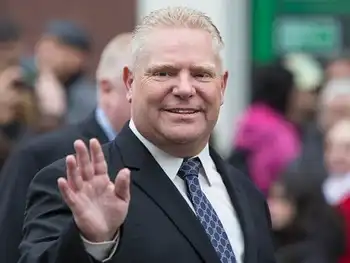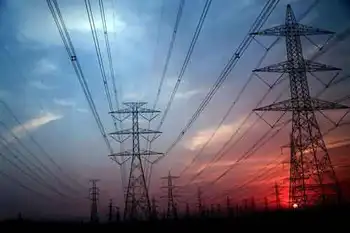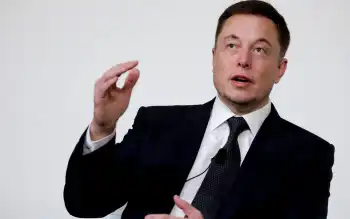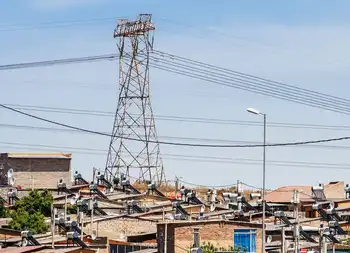Britain ponders nuclear future
By The Independent
Substation Relay Protection Training
Our customized live online or in‑person group training can be delivered to your staff at your location.

- Live Online
- 12 hours Instructor-led
- Group Training Available
But behind Mr Huhne's bullish claims, an awesome array of hurdles must be cleared, with unprecedented timeliness for the deadline to be met.
There is no time to lose. The timetable for a massive jump in nuclear generation within the next decade is not an arbitrary creation of the power industry. Britain faces a looming energy gap as coal power stations are turned off in 2015 to comply with European clean air legislation. And the replacement of obsolete fossil fuel plants with zero-carbon renewable or nuclear generation is central to meeting targets to cut UK carbon emissions by 34 per cent by 2020.
Mr Huhne's efforts to allay fears of delay followed a Confederation of British Industry report warning that £150 billion of private sector investment in low-carbon infrastructure – including nuclear – is being threatened by uncertainties in the planning regime.
But the planning process is just one of a dizzying array of regulatory, political and financial questions that need answers in the next 18 months if construction is to start at EDFEnergy's Hinkley Point site in Somerset by next year, as is currently planned.
Step one: regulatory approval
The first milestone is for the Nuclear Industry Association's detailed justification for new sources of ionizing radiation to be passed by Parliament. Politics will loom large. The submission will be put before the House this autumn by the Secretary of State, and will therefore be the first major test of Liberal Democrat Mr Huhne's uncertain commitment to new nuclear.
Nuclear has been a difficult balancing act for the coalition Government. The Liberal Democrats have always been outspokenly against new reactors, and Mr Huhne has said he does not believe nuclear is economically viable. Since May, the Government has worked hard to paper over the cracks. The Coalition Agreement said the Government would press ahead, while allowing the Lib Dems to abstain. And as Energy Secretary, Mr Huhne has repeatedly said that he is comfortable with nuclear providing it is not with public subsidy.
The positive noises have allayed some of the industry's initial fears. But skeptics point to decisions such as the withdrawal of support from Sheffield Forgemasters for a giant press for reactor forgings as evidence of a fundamental tilt away from nuclear. Against such a background, the regulatory justification is seen as the first big test of the rhetoric. "This is the first opportunity Chris Huhne has to walk the talk," a senior industry source said yesterday. "Investors in France and Germany, one step removed from UK politics, need evidence he has some skin in the game."
Step two: getting the licences
Meanwhile, the Generic Design Assessment GDA to license all-new reactor designs from Areva and Westinghouse is already underway. The process is due to complete next June, but at the same time the regulator needs to be entirely restructured, scaling up from the low-level oversight function of recent years to take on both the GDA itself and the vastly important site licensing process that will follow. The straitened public finances and government search for savings is already ringing alarm bells in the industry. "This is not an area where there can be cuts," one source said.
Step three: planning permission
EDF expects to put in planning applications for Hinkley and Sizewell this winter. But before the necessary permissions can be granted – needed by the end of next year – major changes to the planning system itself also need to be worked through. First is the National Policy Statement NPS, a strategy document designed to streamline the planning procedure but that needs to be consulted upon, agreed, and ratified by Parliament first. The timetable for the energy sector NPS has already slipped by six months. A revised draft is now due for consultation this autumn, to be ratified by March.
In the meantime, the former government's Infrastructure Planning Commission to oversee major applications has been scrapped, to be replaced by a Major Infrastructure Unit giving ministers the final say. Supporters say the change is largely cosmetic. But critics – including the CBI – warn that details are unclear and delays a significant danger.
Step four: the policy framework
The biggest hurdle for new nuclear is that the power stations are hugely expensive, and the cost of power too unreliable to provide a sufficiently secure return. It is therefore incumbent on the government to create a policy framework that will provide incentives for private sector investment. The Government has committed to a carbon floor price to help give extra stability to the volatile, and low-priced, EU Emissions Trading Scheme. But until details such as the level of the floor price are clarified, the efficacy of the scheme remains in question. Considerable work is also required on how liability for as-yet-unknown decommissioning costs will be apportioned.
But the trickiest issue of all is the reform of the electricity market, and the vexed question of what constitutes a subsidy. Nuclear is not the only industry with such a front-loaded cost model. But renewable energy generators such as wind farms have the Renewable Obligation RO regime guaranteeing the long-term sale of their power, whereas nuclear power is traded only in short term contracts. "The design of our electricity market is almost uniquely ill-qualified for delivery of long-term kind of investment," said Dieter Helm, a professor of energy policy at Oxford University. A market review is promised over the coming year, with a range of options on the table, the industry favourite being an extension of the RO to create a generic "low-carbon obligation".
But there are major political snags. "One person's incentives are another person's subsidy," an industry source said. "If nuclear gets anything it is seen as a subsidy, but if the review doesn't make the economics make sense then companies won't build."
Worryingly, the last electricity market reforms, after privatization, took several years. "This is the most important piece of the jigsaw," Professor Helm said. "We will be extremely lucky to get it sorted out by the end of 2011."











